Burmese: aa cᶜʰᵐcᶜʰᵐ D* E* P* Uw*
Burmese is the name of the most coveted colorpoint coat color for new owners of a Mongolian gerbil. This color is technically a Colorpoint Black gerbil, and its genetics are the same as for its agouti equivalent – the Colorpoint Agouti.
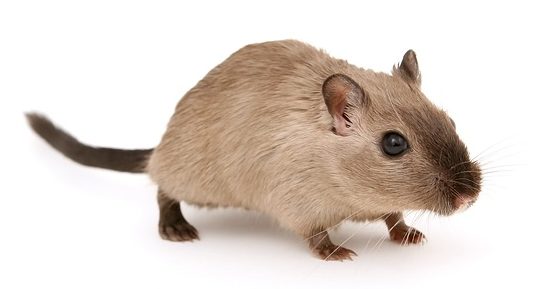
This color is where the gerbil appears to be a rich, soft brown colour on the body and head – but with darker colored points on its nose, ears, feet and tail. They often have tiny white spots on their chins, chests and feet just as Black gerbils can.
Many domestic pets including cats and rats have this unusual coloring – but it isn’t yet found in degus, duprasis or Persian Jirds. It has recently been discoverd in dogs for the first time – and looks pretty awesome).
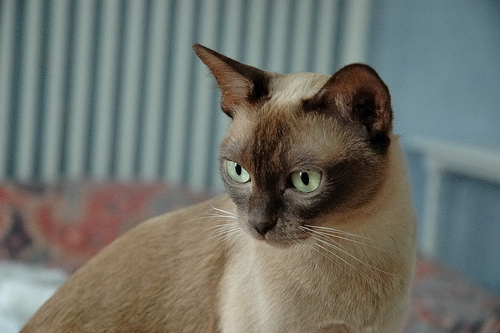

Burmese are always a color of gerbil that is in great demand from people as the patterning is well known in many other species – especially cats – and so people are automatically drawn to it from outside the fancy. Breeding for this colour will certainly produce you more than the average number of interested buyers…
Burmese coats in gerbils do not have the normal ‘ticked’ appearance of the agouti-based colours as the ticking is from the different colors in the hair and the distinctive black tips – but of course non-agouti-based gerbils only have one colour in their coats and so the coat appears to be smooth or solid.
Because there is no agouti gene here adding the white tummy, these gerbils are named after the fact that their overall color is the same – and are known as ‘self’ gerbil colours. You won’t get a Burmese gerbil with a full white tummy.
The only time a Burmese gerbil isn’t Burmese though – is when it is a Colorpoint Slate.
Black and Slate gerbils (pups shown below) are virtually identical when shown as standard – there is virtually nothing obviously visual you can use to tell them apart at a simple glance – you have to look at the finer details like toes nails as adults and eye-shine (pup at back has typical ‘slate’ eye-shine).
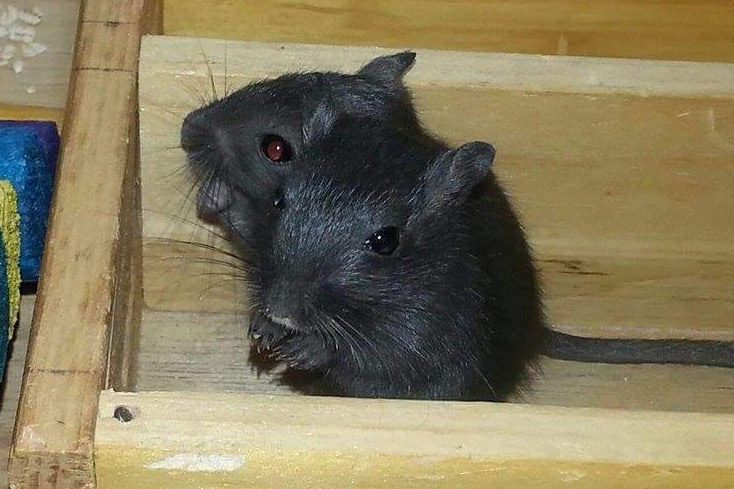
Needless to say, as they are so similar in this non-colorpoint form, they are still quite similar in the colorpoint form too. So Colorpoint Black and Colorpoint Slate or Light Colorpoint Slate are very similar and are often confused. Similarly, it takes a closer look to tell them apart if you don’t have one of each side-by-side.
I’m not sure it IS Burmese yet?
Well, there are three coat colors that all look quite similar to the un-practised – and they are Burmese, Colorpoint Slate and Light Colorpoint Slate. Most often though, the plain Colorpoint Slate (below) is really dark so you can almost certainly write that one off if you can’t really see clearly the darker points.
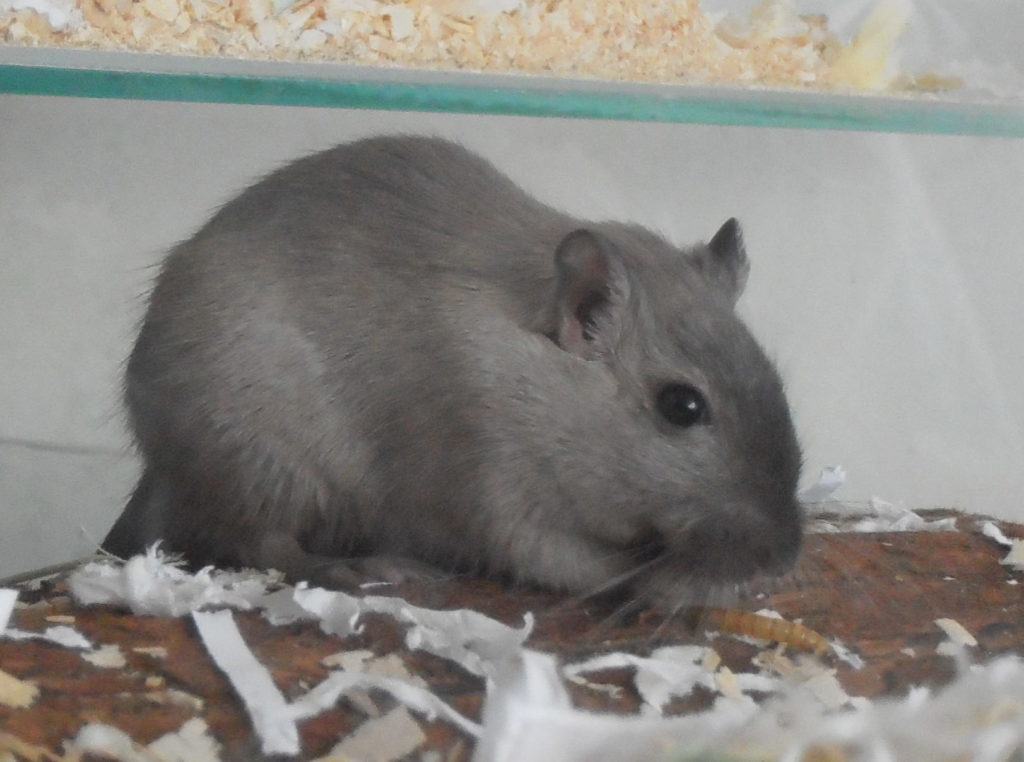
So out of the two we have left – how can you be sure yours is a Burmese?
Even if you know the genetics it really is still only down to the finer markings – especially as the ‘Black’ parent may well have been a misdiagnosed Slate anyway – not helping things at all.
So, what are we looking for? Well, toenails for starters. LCP Slate toenails are usually lighter rather than black (see Light Colorpoint Slate shown below) – although these only really become clear as the gerbil matures – and won’t be of any use to you AT ALL if your gerbil is spotted! (All spotted gerbils have white toenails).
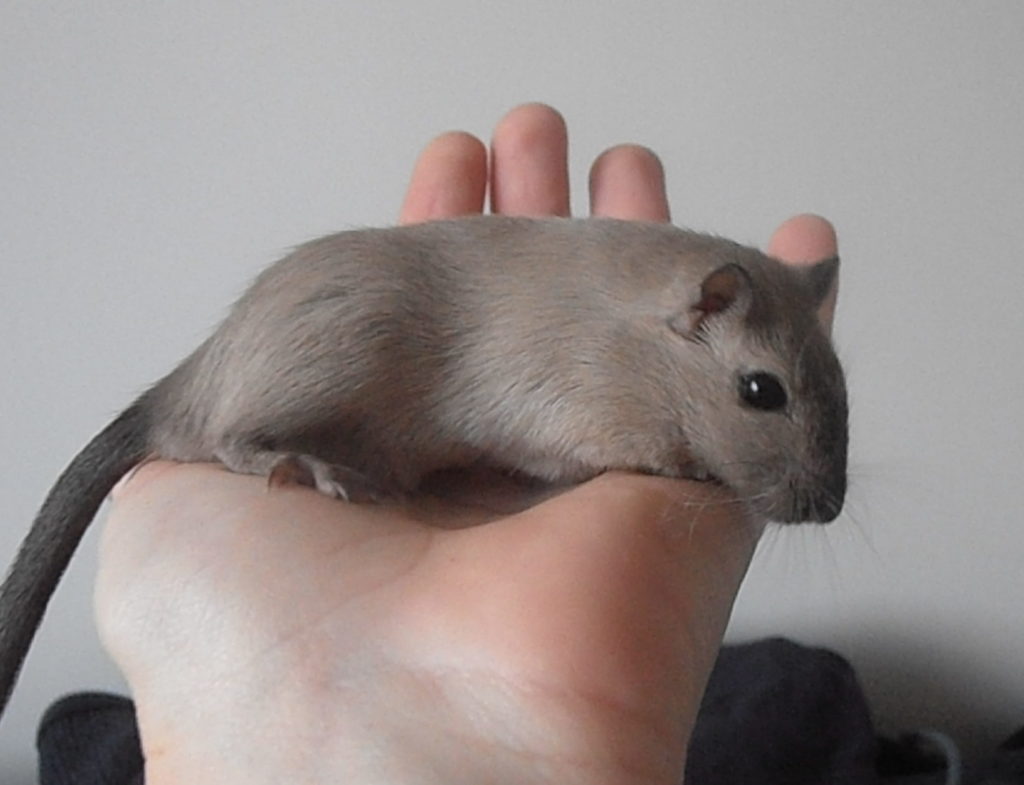
Burmese gerbils have really dark toenails on all feet, all the time – however, not of course if they are spotted.
Burmese gerbils do however have a lovely warm-looking coat though and this is one of the key features – even if spotting has lightened the coat – it should still look soft and brown. LCP Slates almost have a greyish tinge to their coats – even though they can look brown in some lights.
This also can be seen in the tail – a Burmese is a colorpoint that is technically black-based so will have a nice solid black tail (see image below). The tail of a Colorpoint Slate will be slightly lighter – see following image.

It really doesn’t matter to most people which one they have – especially if you are just having them as pets – but others among us like to know for sure. But, if you want to breed Grey Agoutis/Colorpoint Grey Agouti or Siamese gerbils – it is very important to get the right one if this is your only colorpoint for stock.
Slate gerbils (as with all uwᵈuwᵈ gerbils) whether they are colorpoint or not, have what is termed ‘ruby eye shine’ when photographed – however, so do all other colourpoints (i.e. the Burmese) so this can’t be used to tell them apart…
Breeding them to another known non-colorpoint uwᵈuwᵈ is the best genetic way to be 100% sure if you can’t be sure using your own eyes (as this will make ALL the pups uwᵈ colors if it is LCP Slate).
Alternatively, putting clear images online in a gerbil group for some experienced colorpoint breeders to tell apart is usually definitive. Make sure the images are clearly showing the toenails in non-spotted individuals – and another clear facial shot and one of the full tail. That way all the key indicators are covered.
This really clear image below shows this gerbil to be a Light Colorpoint Slate; the tail isn’t dark black and the overall body isn’t a rich brown – it is more of a gray.
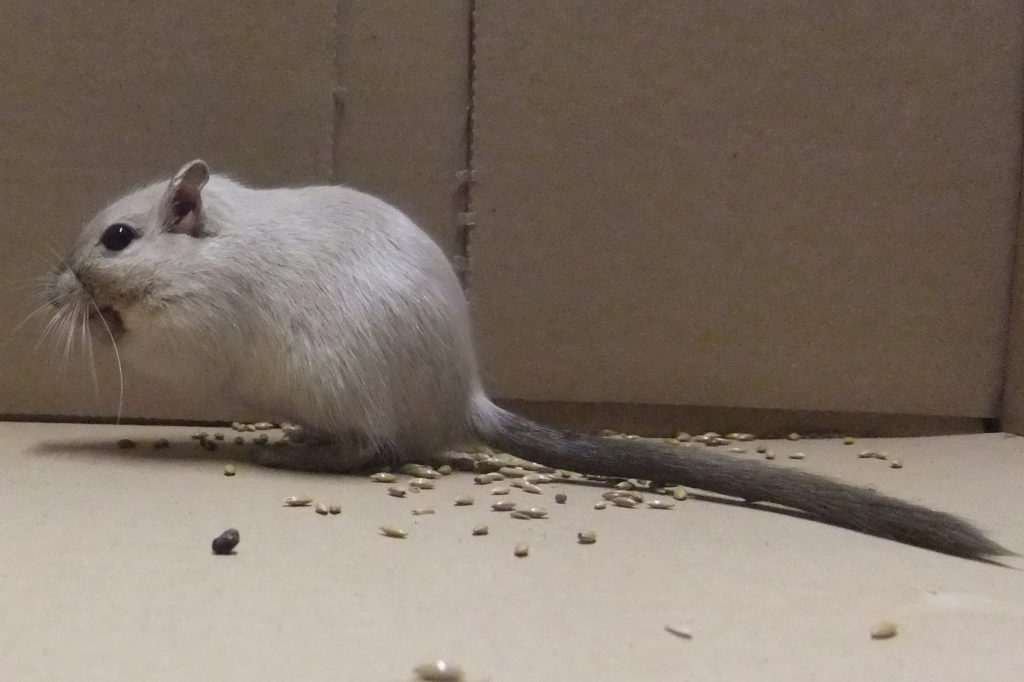
You Have Burmese Gerbils You Want To Breed?
Due to the prevalence of all the dominant genes needed to create a Burmese colored gerbil, this color is one of the most commonly seen colorpoint gerbil colors in litters of pups alongside Colorpoint Agoutis. It is much easier to get a Burmese pup from random genes than it is to get a Colorpoint Polar Fox for example.
Genetics-wise, the genes for a Burmese gerbil are ‘strong’ (strong in the sense of being prevalent and dominant in the gerbil fancy), that if you breed a Burmese gerbil to any other colorpoint gerbil on the non-agouti side, you will always get Burmese pups in the mix.
Also, if you mate a Burmese gerbil to an agouti-based colorpoint gerbil from a non-agouti-based parent, you will also get a high percentage of Burmese pups due to these ‘strong’ genes.
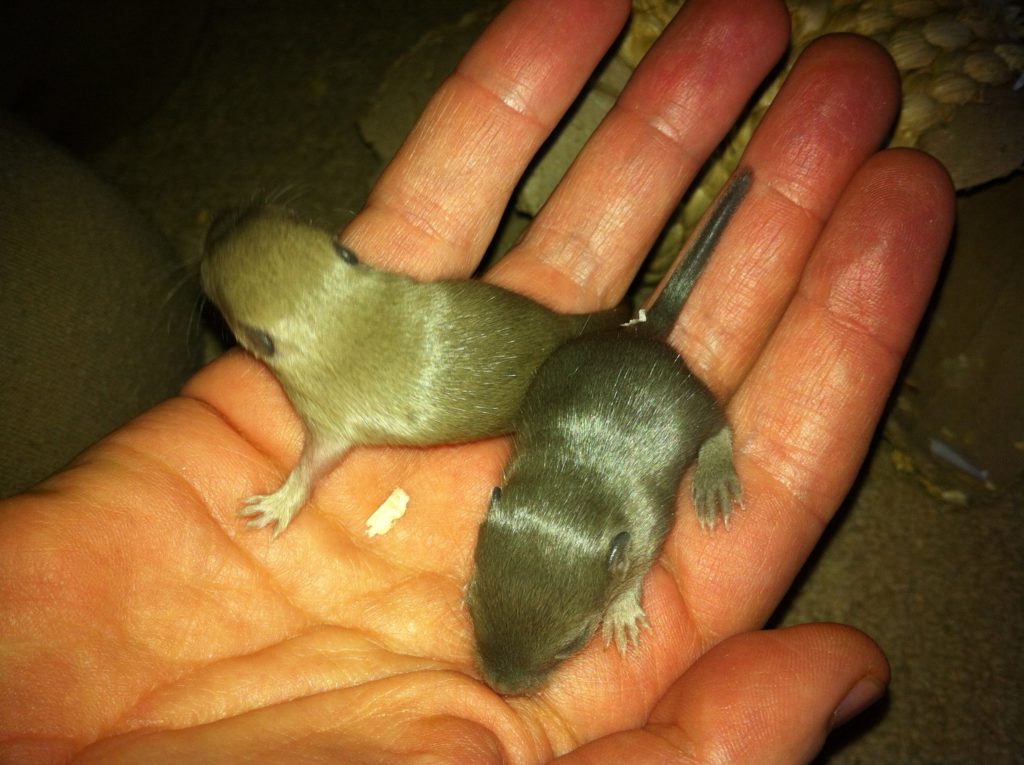
You Want Burmese Gerbil Pups?
There are loads of different ways to get litters full of Burmese pups depending on the colors you already have in your clan – and even better if you have identified their genes.
Image above shows a Burmese pup on the left next to a Colorpoint Slate pup on the right – easy to identify the different pups when you know the genes in the mix…
If you want Burmese pups but you don’t have one to hand – you could simply breed two Black gerbils together – they may have a whole host of recessive colors in there, and if they both carry a colorpoint gene you are in luck.
The one thing you will never get from two Black gerbils is an Agouti gerbil. You can’t carry the dominant A gene for agouti coats – so once you have only Black (or self) gerbils – you can’t make anything other than more selfs. But this is no bad thing – there are LOADS of lovely self colours out there.
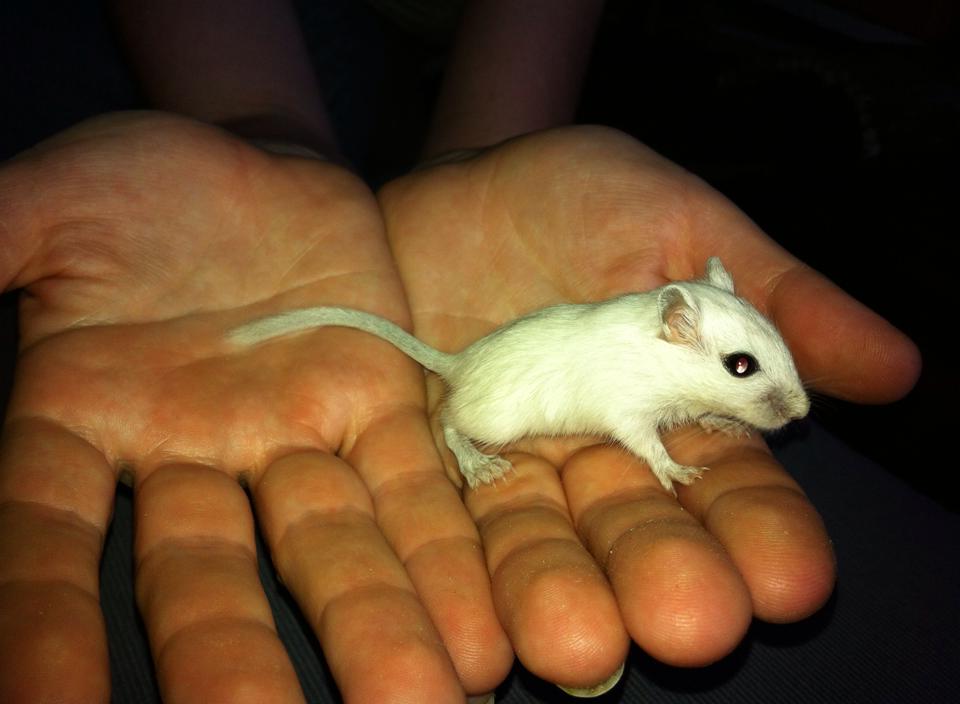
So back to Burmese. If you have a Burmese already – or what looks like a Burmese, then just breed another self colorpoint into the mix – or an agouti-based colorpoint if that is all you have – but only if you know it had a self-based parent.
You would be best however, to aim to only breed gerbils on the black-based or self side of colors to eliminate any agouti-based pups completely – especially if they only have agouti-based parents. If you can manage to not breed any agouti-based colors when you are starting out – this will get you on a good footing sooner.
By eliminating the dominant Agouti gene [A] you are doubling your chances of getting Burmese instantly.
The only time you can breed an agouti-based gerbil into your line when starting out is if your only colorpoint gerbil to hand is on the agouti side – for example a Colorpoint Agouti (pictured center below (with dark toenails)). This colour is the exact genetic match for a Burmese, but on the agouti side.
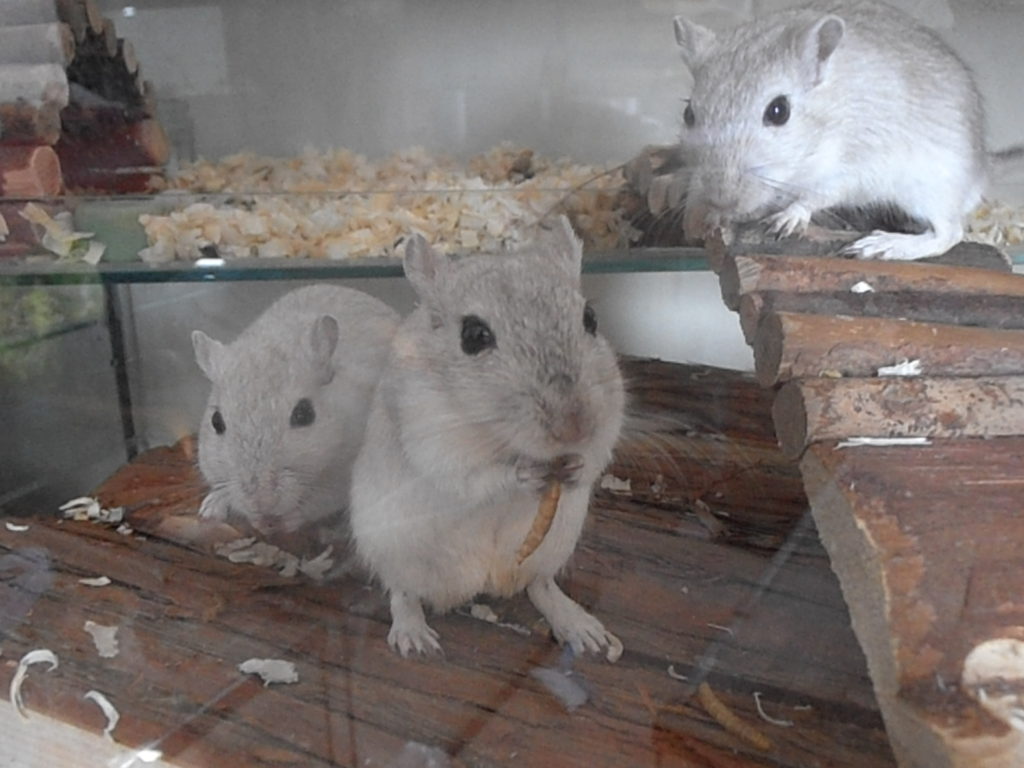
Also, if you are aiming for a high percentage of Burmese pups in litters you also want to avoid colours with double or treble recessives – especially those with the pink eye gene – like Saffrons/Red Foxes (ee+pp), Silver Nutmegs (ee+uwᵈuwᵈ), and PEWs (c*c*+pp).
These combinations won’t stop you getting Burmese gerbils in your litters if the other genes are there, but they considerably lower the percentage of Burmese pups you will get. By adding loads of alternate colors – like adding more fruit to the fruit bowl – you just increase the variety – what you need to do to get Burmese gerbils is DECREASE the variety.
Don’t Have Burmese Gerbils – But Want Them?
If you don’t have any Burmese gerbils of your own but still want them – you could try one of the 3 following plans to see if you can get them…
1) Breed any two different aa colorpoint gerbils together
2) Breed any aa colorpoint gerbil with any other colorpoint gerbil
3) Breed two aa black-eyed gerbils, with at least one colorpoint parent each, together.
This colour has many ways of achieving it – but if you want to breed the highest numbers you can – do avoid including gerbils in your Burmese plan who have an obvious trait that Burmese gerbils don’t have – especially the pink-eyed gene.
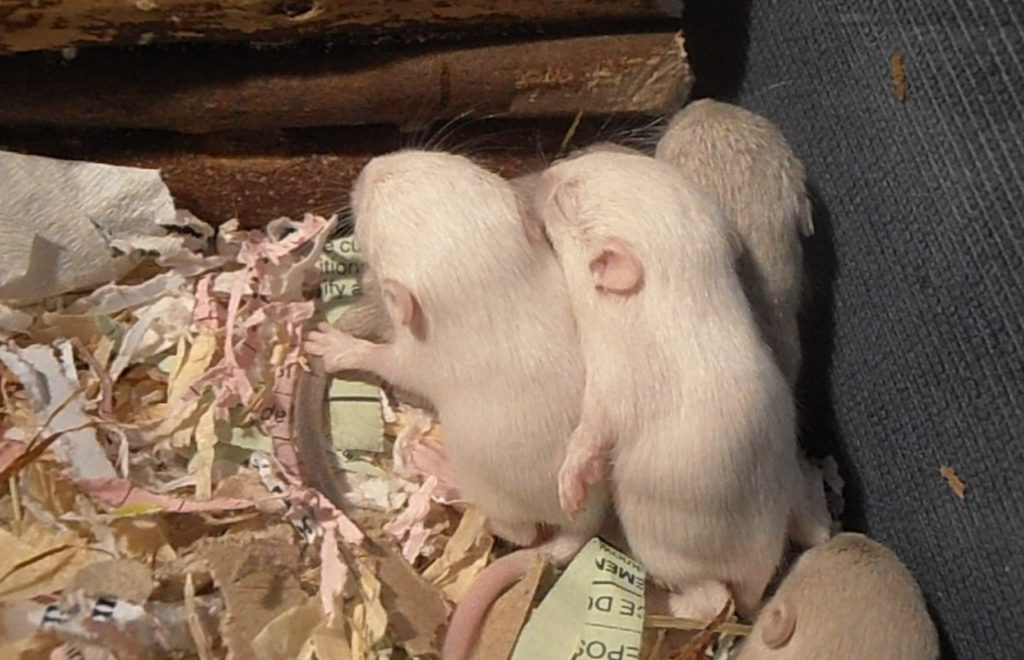
Don’t Want Burmese Gerbil Pups In Your Litters?
There are plenty of ways to avoid getting Burmese pups in your litter, and here they are:
Only breeding agouti-based colours – ideally where one parent carries AA.
This will ALWAYS exclude Burmese (and all other black-based colors from your litters). You can use any agouti-based colors as parents for these pairings – as long as at least one of them is [AA], so Polar Fox to Argente or Grey Agouti to DEH, etc.
Your pups may still carry the a gene from these crosses of course if they had it in the first place, but you could work to establish a good non-self line going forward. You would just need to find two parents that are both AA and all the pups will be AA too.
No Black or Burmese gerbils ever again…
Eliminate the colorpoint genes.
If you don’t have any colorpoint genes in your lines then you can’t get any colorpoint gerbils – and this means no Burmese. However, if you wanted other color colorpoint gerbils just not Burmese – you just need to work around it by doubling up the other genes – but this may mean more than one line.
For example you could have a line with double uwᵈuwᵈ – so you only got CP slates – or double ee so you only got CP Nutmegs and Silver Nutmegs. You can’t get Slates and Nutmegs in the same litter when using double recessives.
Only breed pink-eyed gerbils.
This one is a no-brainer. Burmese don’t have red eyes…
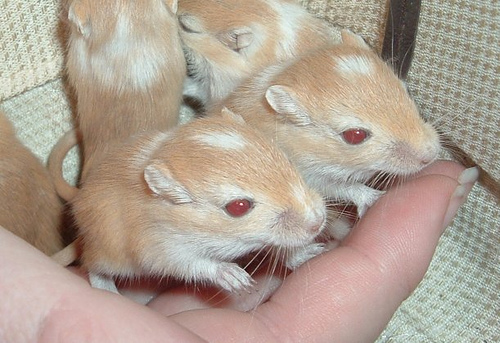
Only breed a pair of gerbils which both carry the SAME recessive genes.
Similar to both above really. If these same recessive genes you are using are NOT colorpoint genes – then you can get all the other colours from both colour sides – but no Burmese.
This would mean something like breeding 2 ee gerbils together (like a Saffron and a DEH; or a Nutmeg and a Polar Fox). If both parents do not carry the dominant [E] version of this gene – you can’t ever get Burmese pups from that pairing even if they had 4 Burmese grandparents!
Same goes for breeding 2 pink-eyed gerbils together; a Burmese gerbil can’t have red eyes so you will never get one in your litters.
When selecting against colors however, you need to also consider what ELSE you won’t be getting by eliminating something so common a color as Burmese. You can often work around it to get your desired pup colors – usually by increasing the numbers of breeding pairs you have, but sometimes the chances of getting a Burmese are so slim anyway (like crossing an Agouti to an Agouti) it might be worth the risk…
For more information about Breeding for Color please do read on…